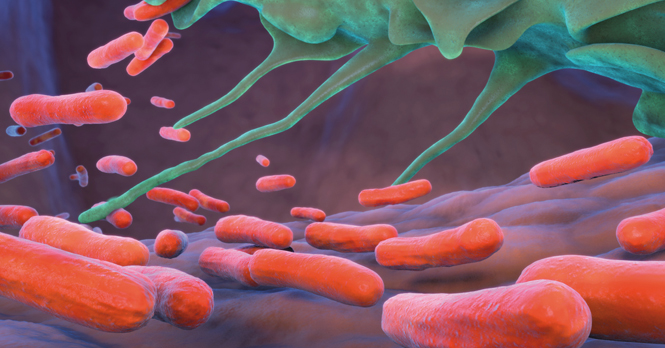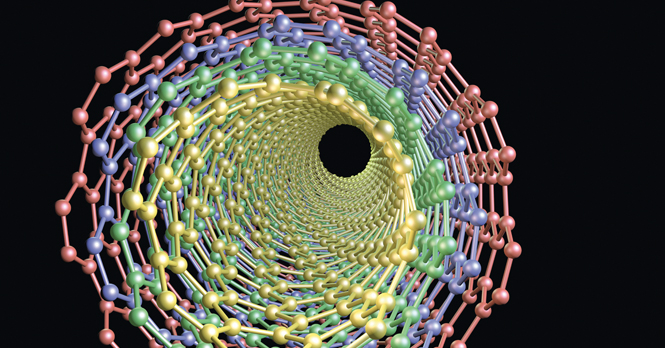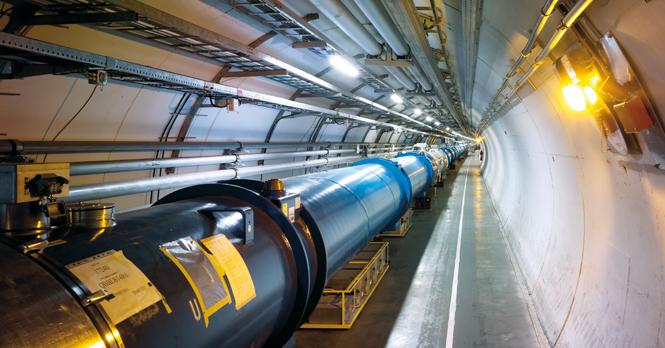URL: https://www.desy.de/e410/e130810/e132951/index_eng.html
Breadcrumb Navigation
A strong cooperation partner
A strong cooperation partner
Top-level research is scarcely possible today without networking and cooperation among various institutes, countries and scientific disciplines. DESY too operates within strong networks. Each year, the research centre’s unique facilities draw more than 3000 guest scientists from over 40 countries to Hamburg. To work as closely as possible with DESY, more and more institutions are establishing outstations on the campus itself.
Particle physics at DESY has always occupied a well-established position on the international research scene. Experts from around the world took part in the experiments at the storage ring HERA. Today, DESY physicists are playing leadership roles in all of the most important projects in particle physics.
The development of innovative accelerator technology is also taking place within collaborative efforts – whether in the Helmholtz Association’s accelerator initiative ARD or in the international consortium that is developing the TESLA technology for the accelerators of the future. Cooperation on X-ray sources is equally intense. DESY has a share of more than 50 per cent in the X-ray laser European XFEL. Countries such as India, Sweden and Russia are involved in PETRA III. And a number of institutions that are closely connected with DESY are being set up on the campus in Hamburg: CFEL is devoted to research into ultrafast physical processes; CSSB will deal with infection research; and the Max Planck Society, which is already involved in CFEL, is planning the construction of a new institute.
Centre of excellence CFEL
The Center for Free-Electron Laser Science is investigating ultrafast processesIs it possible to observe how an electron jumps from one reactant to another with incredible speed during a chemical reaction? Can biomolecules be illuminated with intense X-ray flashes in such a way that scientists can discern the atoms they are made of? In Hamburg, a whole research centre is concentrating on such cutting-edge questions: the Center for Free-Electron Laser Science (CFEL), which DESY, the Max Planck Society and the University of Hamburg established in 2007.

The CFEL experts are studying the tremendously fast processes in the nanocosmos from a variety of perspectives – in other words, with various research instruments. Some groups use the ultrashort X-ray pulses produced by FLASH, by the LCLS X-ray laser in the USA, or by the European XFEL in Hamburg. Other teams are working with optical lasers or using electron or scanning tunnelling microscopes.

Infection research at CSSB
Researchers from different fields work together at the Centre for Structural Systems BiologyWhen biologists want to explore fundamental processes in cells or proteins, they often rely on physical methods. One of the most important techniques is X-ray structure analysis, whereby researchers expose proteins to intense X-ray radiation to decipher their structure and mode of operation. This makes it possible, for example, to identify the molecular mechanisms underlying the development of tuberculosis, one of the most dangerous infectious diseases. At PETRA III, the European Molecular Biology Laboratory (EMBL) is studying the tuberculosis bacterium, among others, in order to determine possible points of action for new medicines.
In Hamburg, the experts are pooling and intensifying their efforts at the Centre for Structural Systems Biology (CSSB), an interdisciplinary research institute on the DESY campus. CSSB is coordinated by the Helmholtz Centre for Infection Research; DESY and EMBL are major participating partners, alongside various universities and research institutions from Hamburg, Niedersachsen and Schleswig-Holstein. Their common goal is to investigate with atomic resolution how pathogens attack.

A boost for the nanosciences
With the NanoLab, DESY is stepping up its nanoscience researchNanotechnology is considered a key technology of the future. Nanoscale components and structures will probably one day form the basis of extremely fast computers and intelligent new materials. At DESY, nanomaterials are already being systematically studied. By means of the X-ray flashes of PETRA III and FLASH, they can be probed in such detail that even the smallest features can be distinguished. To help analyse the nanoworld even more effectively, DESY is now creating a new laboratory, called the NanoLab.
Generally, scientists wishing to examine material samples at DESY have to create and test these samples in their home laboratories before transporting them – often in special containers – to Hamburg in order to analyse them with X-rays from the accelerator. The NanoLab is expected to simplify this procedure. It provides about 1000 square metres of laboratory space where scientists can manufacture nanosamples and prepare them for the experiments. One tool that is used at the NanoLab is the “ion scalpel”, which can cut out tiny pieces from a material with a precision on the nanometre scale. Among other things, this is useful for the analysis of innovative metal alloys and multilayer stacks that exhibit unusual magnetic properties and may be suitable for use as data storage units.

The Geneva connection
DESY physicists are conducting experiments at the world’s most powerful acceleratorIt’s the most powerful accelerator in history and currently the site of the most exciting particle physics experiment ever: the LHC, which accelerates protons to collisions at record energies. The 27-kilometre-long colossus thus has the potential to discover completely new building blocks of matter – as in the summer of 2012, when it detected a new particle believed to be the Higgs boson. The ultra-high-speed collisions in the LHC are monitored by detectors as tall as houses. Numerous DESY researchers are contributing their expertise to the experiments.
The two largest detectors in Geneva – ATLAS and CMS – are massive machines consisting of millions of highly sensitive individual sensors. Each experiment is managed by a large team of more than 2000 specialists from around the world, who jointly operate the detector and collect and analyse the data it produces. DESY itself has more than 100 experts working at ATLAS and CMS. Among other things, the DESY experts help analyse the huge amount of data the detectors collect every day to search for signs of new particles. The DESY specialists regularly travel to Geneva to operate the detectors in shifts or discuss highly complex data analyses with colleagues from around the globe. The physicists have set up control rooms for both detectors at DESY, which allows them to remotely evaluate the quality of the data the experiments produce. In doing so, the DESY scientists benefit from their experience of operating the HERA accelerator in Hamburg.


